This article is published concurrently with the Spring of Latino Art and the Latino Art Now! (LAN) national biennial conference and related programming taking place in Houston during the springtime of 2019.
When I saw the work of Gabo Martinez, I immediately liked it. Her ceramics pay tribute to her roots, but with fresh forms that she carves with her own heartfelt words. Originally from Tarimoro, Guanajuato, Mexico, Martinez studied Ceramics at Texas State University in San Marcos, and now lives in Houston. Her solo exhibition Sueños de Turquesa, presented by Deasil at Front Gallery, features new ceramic vessels and works on paper. Here she talks about her childhood, making work that empowers herself and others, and more.
Lauren Moya Ford: In your ceramics you use the sgraffito technique, meaning you carve the surface of a piece to build text or designs. The creative process is built on extraction, which reminds me of clay itself: it’s taken directly from the earth. A clay’s color, consistency, and mineral composition are all specific to its place of origin. In a way, clay is a place. How have the places you’ve lived influenced your work?
Gabo Martinez: Growing up in Texas, we would road trip down to Mexico every summer of my childhood. My hometown of Tarimoro, Guanajuato is full of rolling, green hills and scenic valleys. The town is very colorful; every house painted brightly and uniquely. Tarimoro also used to be known for producing red bricks from locally sourced clay mines.
I remember walking around the pueblito and watching how houses were built with this red brick. The red clay was present everywhere during the mercados as well, from functional hand-painted bowls to cantaros used for carrying water.
I think my experiences in Mexico have greatly influenced my work. Working with terracotta is very nostalgic for me. I also enjoy making my work very colorful. I like the idea of evoking emotion through the use of saturated colors against the warmth of terracotta clay.
LMF: The word sgraffito has Italian and Greek roots, meaning “to scratch” and “to write.” In some of your works, you carve text onto the ceramics in Spanish or English. The letters cover the surface of the pieces, functioning decoratively and literally. How did you start using writing in your ceramics? Where do the texts come from?
GM: Music is very integral to my practice. Even if I’m not actively listening to music while I’m working, there’s probably a song playing on repeat in my head.
Four years ago, I began to create more complex wheel-thrown pots that I would then cover in slip (liquified colored clay) and carve, challenging myself to address the form through surface design. Some of the first text pieces I made were carved with quotes from a book called Dharma Art by Chogyam Trungpa. And then soon after, under the effects of being high on love, I began carving a lot of love songs onto my pieces. I did a few with lyrics from Carla Morrison and the Black Keys. After working that way for a while, I knew I wanted to carve my own texts onto my work.
Luckily, I had kept all my journals and sketchbooks from years before when I had been writing a lot of poetry. For my largest pieces to date, I knew I wanted to be very personal, and so I decided to use two poems that deal with traumas that I experienced growing up. Through this body of work, I sought to bring closure, empowerment and healing to myself and others. Carving these poems onto my pieces, word for word, allowed me to reflect on my own suffering but also the growth that I was experiencing. I wanted to share my pain and my story in order to encourage others to do the same.
LMF: The designs wrapping around the surface of your vessels compel the viewer to orbit around the piece, moving, reading, and observing. The patterns on your ceramics and prints form an infinite loop that suggests prayer or recitation. Ceramics and printmaking are both meditative, repetitive processes. Do you consider ritual to be a part of your practice?
GM: Whenever I make art, I definitely enter this other headspace where I’m flowing intuitively. I make repetitive art because there’s something comforting about doing a process over and over. I think my prints speak in a vocabulary that is intuitive, meditative, and subconscious. I also enjoy the repetitive nature of my work because it is visually pleasing and predictable, which often engages the viewer in a comfortable and positive way.
LMF: You use terracotta, which is a material that stretches back to antiquity. Native American and indigenous Mexican art have a strong presence in your work, but I also see Sol LeWitt and other line- and pattern-makers in your ceramics and prints. Can you tell us more about your influences?
GM: I am deeply influenced by indigenous Mexican and Native American art. I admire the reverence these indigenous art forms have toward the natural world. My work explores surface design that only tries to mimic and capture the beautiful symmetry and perfection that already exists in nature. Maria Martinez’s work is some of the most influential for me. I love the way she would delicately coil-build her pots and varnish them with river stones passed down from generation to generation. I admire the care with which she painted her pots, often painting motifs that alluded to the natural world. I also like to study the designs of the Mimbres pottery.
Some contemporary artist that inspire me are Jun Kaneko, Molly Anne Bishop, Bari Ziperstein, Natalia Arbelaez, Ruby Rose Neri and Christina Margarita Erives.
LMF: For the Front Gallery show, you produced prints that are so big they remind me of wallpaper, along with a series of functional vessels. Front Gallery is also the home of the artists Sharon Engelstein and Aaron Parazette, so was the work a response to the domestic nature of the space itself?
GM: I made the prints large-scale because I wanted the installation to be immersive and for the viewer to be surrounded by texture and color. It was important for me to create the illusion of a non-ending sightline of texture and color achieved through the way the prints were installed and spaced out. Large-scale work is challenging, physically, so it involved the whole body to produce and to view. Also, hanging the prints off the wall a few inches produces a dreamlike effect; there is subtle movement constantly happening that softens the way we perceive patterns.
On view at Front Gallery, Houston through March 23, 2019. Open Saturdays, 2-5pm, and by appointment.
Lauren Moya Ford is an artist and writer based in Madrid.


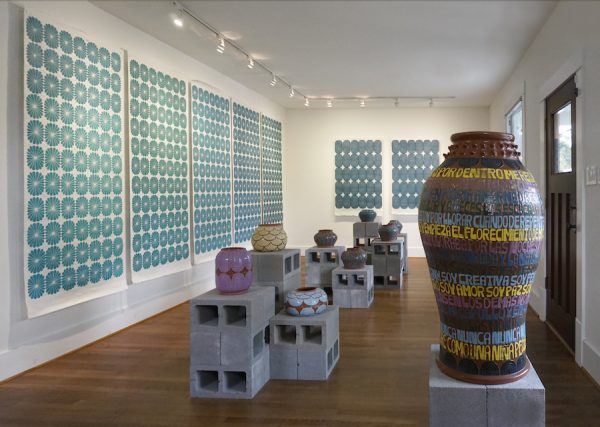
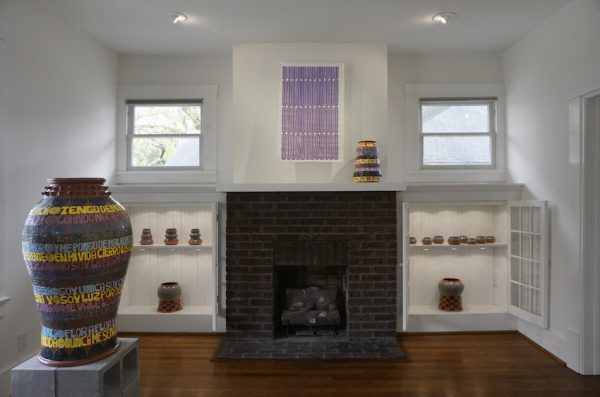
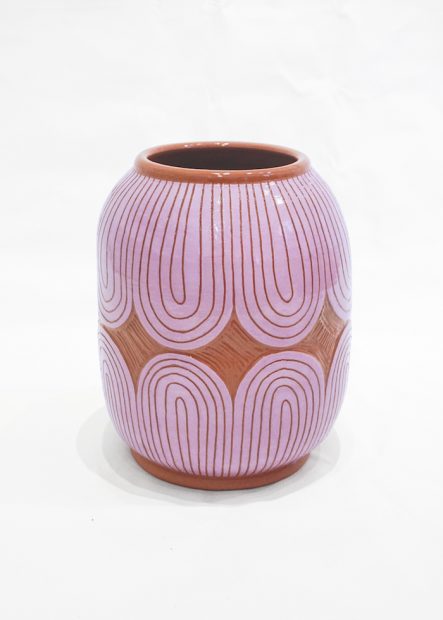
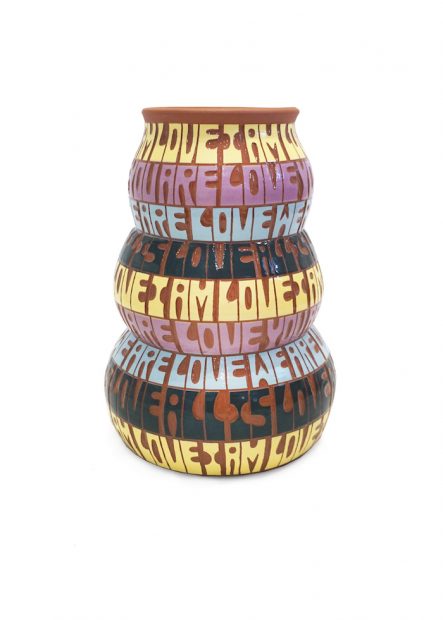
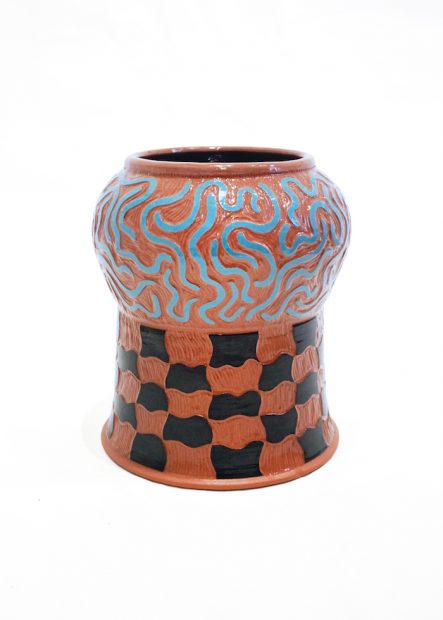

1 comment
Love this.